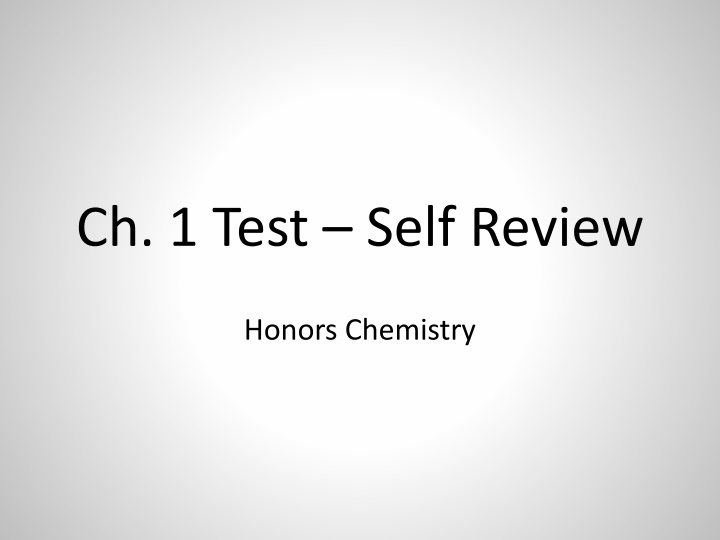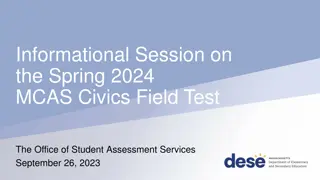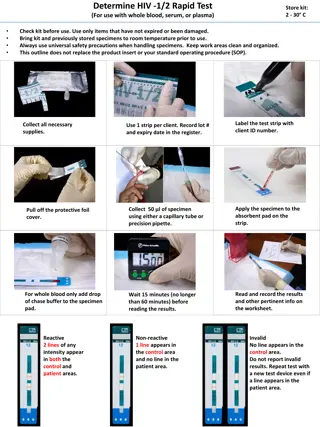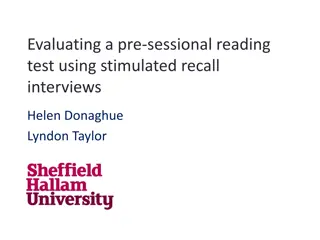
Chemistry Test Self-Review with Substance, Change, and Measurement Questions
Explore concepts of substances, changes, and measurements in chemistry with questions on pure substances vs. mixtures, physical vs. chemical changes, and measurement distinctions. Enhance your understanding of fundamental chemistry principles.
Download Presentation

Please find below an Image/Link to download the presentation.
The content on the website is provided AS IS for your information and personal use only. It may not be sold, licensed, or shared on other websites without obtaining consent from the author. If you encounter any issues during the download, it is possible that the publisher has removed the file from their server.
You are allowed to download the files provided on this website for personal or commercial use, subject to the condition that they are used lawfully. All files are the property of their respective owners.
The content on the website is provided AS IS for your information and personal use only. It may not be sold, licensed, or shared on other websites without obtaining consent from the author.
E N D
Presentation Transcript
Ch. 1 Test Self Review Honors Chemistry
Pure Substance or Mixture? Determine whether each of the following is a homogenous mixture, heterogeneous mixture, element, compound. 1) sugar water 2) Sugar (sucrose) 3) A bucket of marbles 4) Gold
Pure Substance or Mixture? Determine whether each of the following is a homogenous mixture, heterogeneous mixture, element, compound. 1) sugar water homogenous mixture 2) Sugar (sucrose) compound 3) A bucket of marbles heterogeneous mixture 4) Gold element
Physical or Chemical Change? Determine whether each of the following is physical or chemical change. 1) Boiling water 2) Cutting a piece of bread 3) Melting wax 4) Baking Bread
Physical or Chemical Change? Determine whether each of the following is physical or chemical change. 1) Boiling water physical change 2) Cutting a piece of bread physical change 3) Melting wax physical change 4) Baking Bread chemical change
Match the statements 1. _____Separates a homogeneous solution based on differences in boiling points 2. _____Several measurements close to one another 3. _____Separates a mixture based on differences in solubility 4. _____Measurements close t the true or accepted value 5. _____Separates solid & liquid mixture based on particle size a. Precision b. Accuracy c. Distillation d. Chromatography e. Filtration
Match the statements 1. __C__Separates a homogeneous solution based on differences in boiling points 2. __A__Several measurements close to one another 3. __D__Separates a mixture based on differences in solubility 4. __B__Measurements close t the true or accepted value 5. __E__Separates solid & liquid mixture based on particle size a. Precision b. Accuracy c. Distillation d. Chromatography e. Filtration
Measurements & Data State whether the following data is intensive or extensive and whether it is quantitative or qualitative: 1) The chlorine gas is green in color. 2) The density of the substance is 1.33 g/mL 3) The volume of the helium gas is 23 cm3
Measurements & Data State whether the following data is intensive or extensive and whether it is quantitative or qualitative: 1) The chlorine gas is green in color. intensive & qualitative 2) The density of the substance is 1.33 g/mL intensive & quantitative 3) The volume of the helium gas is 23 cm3 extensive & quantitative
States of Matter Describe each of the three states of matter. Be sure to include a description of if they each have definite or indefinate shapes & volumes, state a distinguishing properties for each, and give 1 elemental example of each.
States of Matter Describe each of the three states of matter. Be sure to include a description of if they each have definite or indefinate shapes & volumes, state a distinguishing properties for each, and give 1 elemental example of each. Solid definite shape & volume, partciles are closely packed in ridged order & not compressible, example = iron Liquid indefinate shape & definite volume, particles close together & can flow, example = mercury or bromine Gas indefinite shape & volume, fills the volume of its container & particles very far apart, example = neon
Measurements & Data State whether the following scenarios represent high accuracy and high precision, low accuracy & high precision, or low accuracy and low precision. 1) Three volume measurements of a 4.2 mL give the following results: 2.2 mL, 3.2 mL, and 6.6 mL. 2) The density of water at room temperature is calculated to be 1.003 g/mL, 0.999 g/mL, and 1.001 g/mL. 3) The mass of a paper clip (actually 1.2 g) is found to be 0.55 g, 0.57 g, and 0.52 g.
Measurements & Data State whether the following scenarios represent high accuracy and high precision, low accuracy & high precision, or low accuracy and low precision. 1) Three volume measurements of a 4.2 mL give the following results: 2.2 mL, 3.2 mL, and 6.6 mL. low accuracy & low precision 1) The density of water at room temperature is calculated to be 1.003 g/mL, 0.999 g/mL, and 1.001 g/mL. high accuracy & high precision 3) The mass of a paper clip (actually 1.2 g) is found to be 0.55 g, 0.57 g, and 0.52 g. low accuracy & high precision
Metric Conversions: (set them up w/dimensional analysis) 1. 100 mm = ____________ dm 2. 15.0 cm = _____________ km 3. 0.65 km = _____________ m 4. 134,076 nm = ______________ m
Answers: 1. 100 mm = 1 dm 2. 15.0 cm = 1.50 x 10-4 km 3. 0.65 km = 650 m 4. 134,076 nm = 1.34076 x 10-4 m
Significant Figures/ Scientific Notation Identify the # of significant figures and rewrite in scientific notation. 1. 160000 2. 160700 3. 0.000167 4. 160.0 5. 0.0160
Answers: Identify the # of significant figures and rewrite in scientific notation. 1. 160000 (2) 1.6 x 105 2. 160700 (4) 1.607 x 105 3. 0.000167 (3) 1.67 x 10-4 4. 160.0 (4) 1.600 x 102 5. 0.0160 ( 3) 1.60 x 10-2
Complete the following problems using Sig. Figs. 1. 103.36 + 12.097 + 11 = 2. 24.5 x 0.25 x 100.1 = 3. (76.2 x 15) = 4
Answers: 1. 103.36 + 12.097 + 11 = 126 ( 0 deci. places) 2. 24.5 x 0.25 x 100.1 = 610 (2 sig. figs) 3. (76.2 x 15) = 300 (1 sig. fig) 4
Use Dimensional Analysis and sig. figs to solve the following: 1. If the average student walks 3.63 miles around the school in a day, how many kilometers is this? 2. A piece of magnesium with a density of 1.74 g/cm3 is found to have a volume of 15,600 L. What is the mass of this piece of Mg?
Use Dimensional Analysis and sig. figs to solve the following: 1. If the average student walks 3.63 miles around the school in a day, how many kilometers is this? 3.63 mi 5280 ft 12 in 2.54 cm 1m 1km = 5.84 km 1. A piece of magnesium with a density of 1.74 g/cm3 is found to have a volume of 15,600 L. What is the mass of this piece of Mg? 1 mi 1 ft 1 in 100 cm 1000 m 1.74 g 1 cm3 1000 mL 1 L 15,600 L = 27.1 g 1 cm3 1 mL 1 L 106 L






















